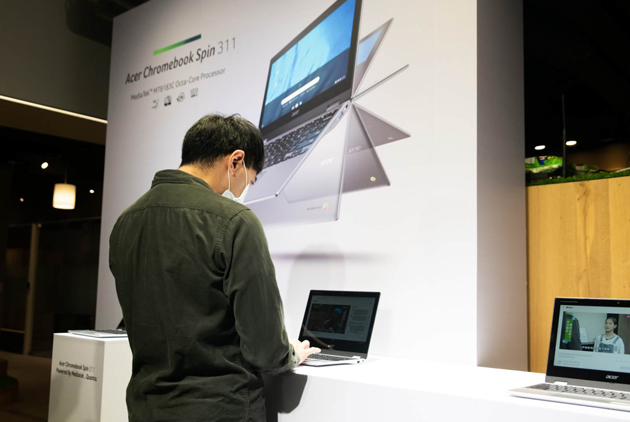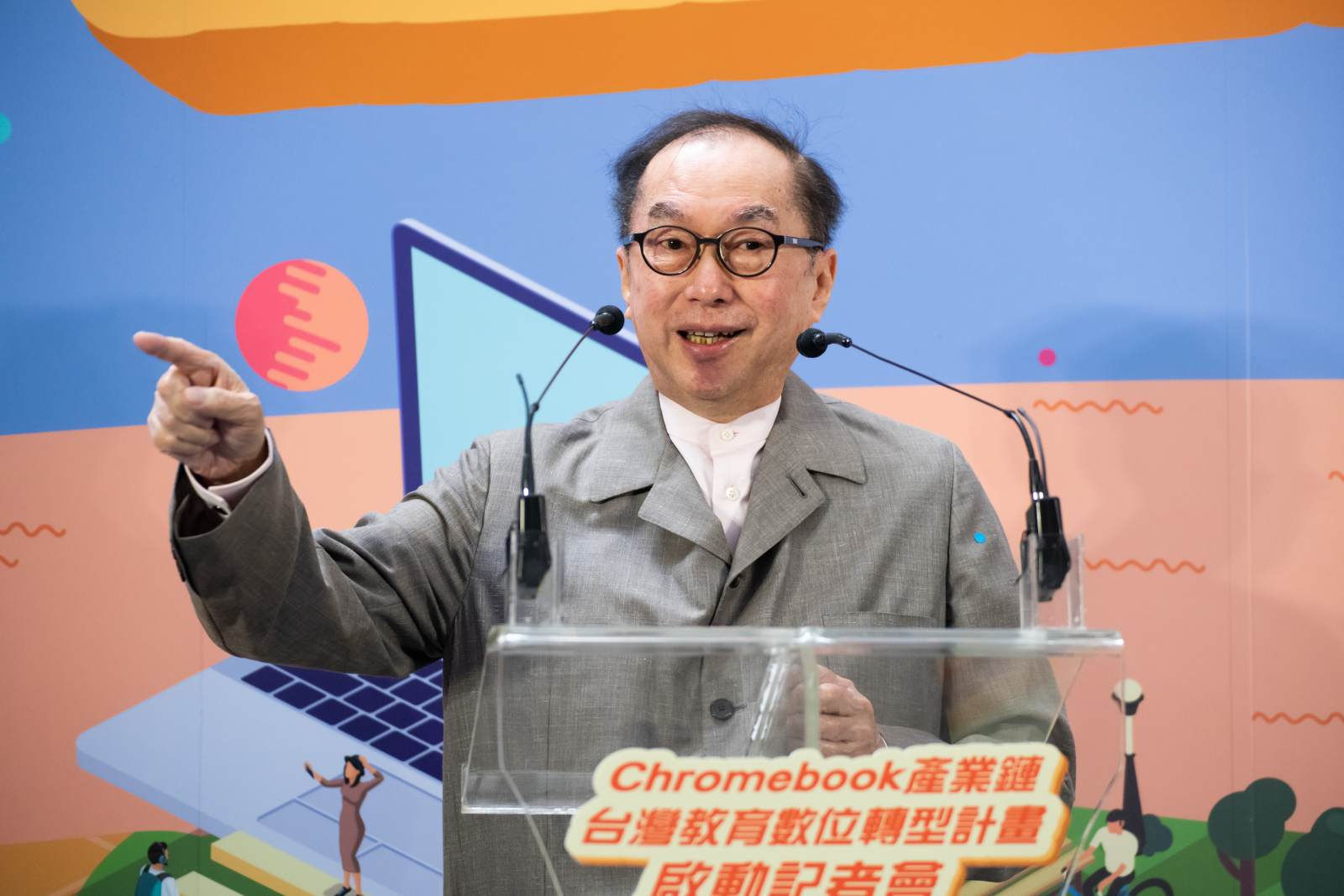Amid supply chain shortages, Taiwan tech companies enjoy the windfall

Source:Ming-Tang Huang
Component shortages are plaguing the high tech supply chain around the world. From chips and related peripherals high up on the chain to key parts like silicon substrates and LED displays further down the line, everyone is scraping the bottom of the barrel. What have Intel and Quanta done to come out on top, becoming unexpected winners during the drought?
Views
Amid supply chain shortages, Taiwan tech companies enjoy the windfall
By Elaine Huangweb only
The COVID-19 crisis has rejuvenated the notebook industry, which is experiencing its highest growth in eight years.
According to the latest PC market report published in January by IDC, Taiwan’s biggest PC brand, Acer, came in fifth in terms of global market share, with an annual growth of 22.9%. The main driving force was the education market’s robust demand for Chromebooks.
Just in February, Acer’s Chromebook revenue grew by 631% year-over-year. Its revenue in the first two months of this year grew by 455% year-over-year.

(Source: Ming-Tang Huang)
The virus has delivered an unexpected windfall to many industries. The electric vehicle sector is picking up, too, and it’s hungry for chips for engines and batteries. Notebook companies are having a hard time getting their hands on the chips they need to ship their products. It was so bad that at one point that one out of three notebook orders could not be delivered. Even now, it’s still one out of every four or five notebooks. Everyone is overbooking in a desperate attempt to secure supplies. It is all notebook companies can do just to keep up.
Winner #1: Chromebook OEM/ODM King Quanta punches above its weight
Acer may fret that the supply shortage will result in unfilled orders, but OEM and ODM companies higher up on the supply chain are becoming “unlikely champions”.
Around mid-March, Quanta Computer, one of the world’s foremost notebook manufacturers, published their numbers for the month of February. Component shortages have made it hard for anyone to ship anything. The tech supply chain around the world is suffering. Yet Quanta announced it shipped six million units. That’s just slightly short of what its three competitors, Compal, Wistron, and Inventec, shipped in total--6.3 million units.
What’s behind Quanta's success?
“Quanta has a monopoly in the Chromebook OEM and ODM business,” reveals a senior manager at a notebook component manufacturing company.
Notebook shipments around the world are at an eight-year high. The most astounding growth during the outbreak of 2020 was exhibited by Chromebooks; they made up 15% of global notebook shipments. According to the market research company TrendForce, since education markets overseas are still showing signs of unfulfilled demand, global shipments of Chromebooks in 2021 are expected to rise until they make up 18.5% of all notebook shipments.
“That Quanta is able to secure components means its clients have allocations, and they have consigned the allocations to Quanta,” explains a senior manager, someone who has spent every day of the past months pulling their hair out worrying about supply. Who is this important client? Quanta mostly manufactures Chromebooks for Acer.
 (Source: Ming-Tang Huang)
(Source: Ming-Tang Huang)
Even though Chromebook’s low asking price has actually caused Quanta’s revenue to slip in February, the fact that it was able to break shipment records means Quanta is sitting pretty above the competition.
Winner #2: Shortage of printed circuit boards gives Intel an edge
The increase in notebook demand has led to more than a chip shortage. A senior manager at a Taiwanese notebook company reveals that even the supply of silicon substrates is getting “pretty tight”.
Back in August 2020, a notebook component manufacturer noticed that the lead time for silicon substrates had extended to half a year.
“Even though the production process took only two to three weeks, the lines were long, so the wait took 24 weeks,” he says.
Notebooks are selling like hotcakes during the pandemic, but one unexpected consequence is a jam in the substrate supply line, which is having an impact on CPU and GPU production. A senior manager at a notebook company is quite put out. Purchases of AMD CPUs and Nvidia GPUs--both made with TSMC’s newest production technologies--have been substantially affected.
“Who knew Intel had already booked (reserved) all the orders?” the senior manager asks. Though Intel had trouble ramping up the supply of 14 nm CPUs to keep up with demand two years ago, the tables have now turned as a result, and it has offered a healthy supply of CPUs since the second half of 2020.
“If AMD can’t deliver, we will turn to Intel,” says the senior manager.
 (Source: Shutterstock)
(Source: Shutterstock)
A senior tech analyst has shared a juicy piece of gossip with CommonWealth Magazine: On the supply chain, it has been common knowledge since last December that Intel is making long-term preparations and ordering substrates ahead of time.
Intel has built a deep, lasting relationship with substrate suppliers such as Nan Ya PCB, Unimicron, and Kinsus since the PC era. “They knew they were behind on the advanced manufacturing process, so they ordered substrates ahead of time,” reveals the analyst.
The jam has caused substrate prices to skyrocket. As a major substrate supplier, Nan Ya PCB’s stock grew by 40% last quarter. But among tech analysts, there is an open rumor that AMD CEO Lisa Su is in a fury about the shortage, and has prepared a special budget just for buying additional substrates.
The senior manager at the notebook manufacturer observes that Intel’s forward deployment strategy regarding substrates has paid off.
“It may cost AMD some hard-won market share.”
Winner #3: High growth for notebook displays means huge gains for AUO and Innolux
Notebook companies are not only facing shortages in chip-related peripherals and substrates; they also need LED displays.
Because of this, Taiwan’s two LED champions, AUO and Innolux, have seen their stocks grow by around 50% over the last three months.
 (Source: Kuo-Tai Liu)
(Source: Kuo-Tai Liu)
Innolux has just wrapped up its earnings conference call for the month of March. Standing before a packed room full of investors and analysts, Innolux President Chu-hsiang Yang said he had confidence in the steady, unchanging demand for LED displays. Coupled with the fact that the supply chain is facing shortages, “Demand will outpace supply in the LED display industry for the entire year.”
He says that although supply seems larger than demand on paper, the lack of key components means supply cannot catch up with demand in a timely manner. Not only is there a shortage of polarizers and all sorts of integrated circuits, manufacturers also want for water and glass. Early-stage investments cannot effectively match late-stage demand; this imbalance in supply and demand is expected to last all year.
Because of this, the asking price for LED displays has been on a steady rise since the second half of 2020. This has evolved into what many display analysts are calling the “longest growth spurt in history”. In the fourth quarter of last year, display prices grew by around 15% to 20%. This quarter, they are expected to grow another 10%.
Taiwanese notebook brands have been negotiating with AUO and Innolux about supplying displays since last year.
“That they began talking last year means they knew the supply of notebook displays may not be enough this year. So they have adjusted the production lines of television displays to temporarily produce notebook displays. The new displays will enter the market in the second quarter,” says the senior manager with the notebook brand.
We can see from this that the bottleneck is not with display suppliers, since assembly lines can be adjusted. The key is the supply of “driver ICs” and “power ICs”.
“For the foreseeable future, forecasted supply still won’t be able to catch up with demand,” says Acer CEO Jason Chen.
Currently, the biggest game-changer in the semiconductor world is whether the shortage of 8-inch wafers can be mitigated by 12-inch wafers. But Chen feels it is unlikely in the short term. He thinks the shortage of components will last until at least the end of the third quarter.
Many worry: What happens if demand recedes during the second half of this year?
The senior manager at the Taiwanese notebook company makes it clear that, despite the current daisy chain of component shortage, “Everyone is overbooking under 10%, tops.” Even if demand falls short of expectations during the second half of the year, the losses can be mitigated.
Have you read?
♦ Who is Andes Technology and why is it soaring?
♦ The coming TSMC boom: Can it double sales by 2023?
♦ Lack of charger with iPhone 12 drives TSMC to outsourcing
Translated by Jack Chou
Edited by TC Lin
Uploaded by Penny Chiang






